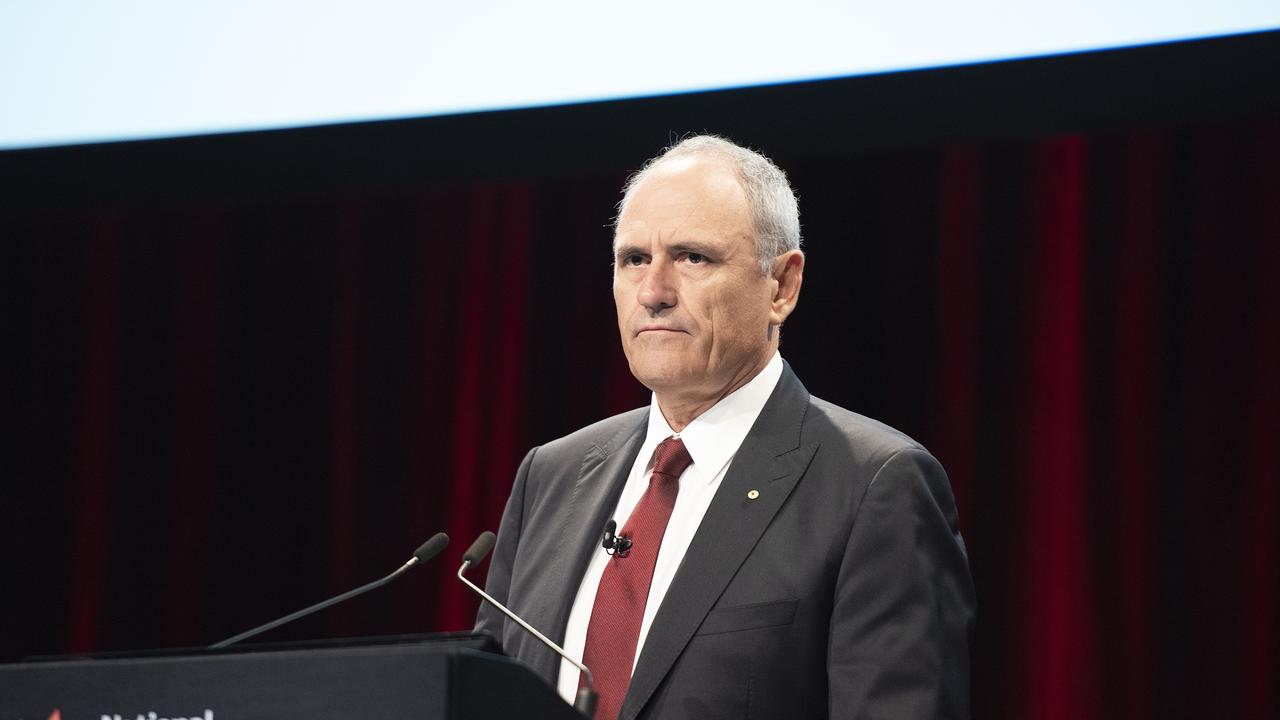Barack Obama and Xi Jinping seal climate pact
THE US and China have struck a historic pact to reduce carbon pollution levels on the eve of the G20.
THE US and China have struck a historic pact to reduce carbon pollution levels on the eve of the G20, in a breakthrough that intensifies pressure on world leaders including Tony Abbott to commit to deeper emissions cuts.
After nine months of secret negotiations, presidents Barack Obama and Xi Jinping unveiled a surprise, ambitious agreement in Beijing that is designed to inject fresh momentum into international climate negotiations. It is the first time the two nations, which account for 40 per cent of the world’s carbon emissions, have agreed to work together.
“As the world’s two largest economies and emitters of greenhouse gases, we have a special responsibility to lead the global effort against climate change,” Mr Obama said.
“We hope to encourage all major economies to be ambitious so we can conclude a strong global climate agreement next year.’’
The US has vowed to double the pace at which it reduces emissions. It has committed to an overall reduction of carbon pollution of between 26 per cent and 28 per cent below 2005 levels by 2025, including using existing laws such as vehicle-emissions standards and curbs on power plants.
China for the first time has set a timeframe for capping its emissions, promising it will peak about 2030 at the latest, as well as proposing that 20 per cent of its power production will be sourced from renewable energy by 2030.
China had previously set a target of sourcing 15 per cent of its power from non-fossil fuel sources by 2020. “We agreed to make sure international climate change negotiations will reach agreement as scheduled at the Paris conference in 2015 and agreed to deepen practical co-operation on clean energy, environmental protection and other areas,” Mr Xi said.
As part of the climate pact, the US and China will look to advanced coal technologies, including undertaking a major carbon capture and storage project in China.
Climate change advocates in Australia seized on the breakthrough between Washington and Beijing to demand the Abbott government commit to deeper cuts in domestic greenhouse emissions, while the mining industry welcomed the focus on low-emissions coal technologies.
In 2009, the US set a goal to cut emissions in the range of 17 per cent below 2005 levels by 2020. The new US target would equate to a 30 per cent reduction by 2025 for Australia on 2000 levels.
Environment Minister Greg Hunt said Australia was already delivering on Australia’s commitment to reduce emissions by 5 per cent on 2000 levels by 2020.
“We have always said that we will consider Australia’s post-2020 emissions reduction targets in the lead-up to next year’s Paris conference. This will take into account action taken by our major trading partners,’’ Mr Hunt said.
“In the meantime, what’s important for Australia is that we have replaced Labor’s ineffective and costly carbon tax with a policy that will actually deliver significant emissions reductions.’’
Labor, the Greens, and climate groups argue that Australia is falling behind the rest of the world.
Bill Shorten accused the Prime Minister yesterday of “sticking his head in the sand’’ and of being a flat-earther. “At the G20 this week, Australia will hold the embarrassing title of being the only nation going backwards on climate change,’’ the Opposition Leader said. “With China and the United States representing around one-third of the global economy and over 40 per cent of global emissions, there will be significant momentum to deal with climate change in Brisbane.’’
The Australian Industry Group warned Australia against rushing to follow the US and China deal. “Industry has long said Australia should make efforts comparable to other major economies, with the most efficient policies we can devise,” said AI Group chief executive Innes Willox.
“But at the same time we need to safeguard industry competitiveness — just as the US, China, Korea, Europe and others are doing. The government should not rush into announcing its own post-2020 target. The planned 2015 reviews by the Climate Change Authority and the government itself should continue, with widespread consultation.’’
Mr Willox said Australia should make commitments when it knew that it could deliver them and understand the impacts. “If China peaks its emissions around 2030, it will change the outlook for Australia’s resources exports — less coal, but maybe more gas,” he said. “This underlines the need for Australia to build a diverse economy that is resilient and adaptable to changing internal and external circumstances.”
Rio Tinto chief executive Sam Walsh said that the focus on technology would “be the solution and it is something that we have been very focused on within Rio Tinto”.
“As you know, we’ve invested $1 billion on HIsmelt (high-intensity smelting) which is a more environmentally friendly way of producing steel,’’ Mr Walsh told the ABC. “We’ve also spent $100 million on carbon sequestration projects. We’re very much aligned with this agreement between the US and China and we look forward to the assistance they can provide in bringing these technology advances ahead.’’
The chief executive of the Minerals Council of Australia, Brendan Pearson, said the US and China deal “puts technology, and particularly low-emissions coal technologies, at the centre of efforts to reduce global CO2 emissions’’.
“In the case of China, the agreement shows that it is possible to constrain emissions while keeping a central role for coal in meeting strong energy demand,’’ Mr Pearson said.
“The strengthening of the US-China policy dialogue and practical co-operation on advanced coal technologies, nuclear energy, shale gas and renewable energy provide in terms of many opportunities for Australia, particularly its coal and uranium sectors.’’
The Climate Institute’s deputy chief executive Erwin Jackson said that the US and China deal had eclipsed Australian efforts.
This would increase pressure on the government to devise a credible climate policy and follow the EU, which had announced it would cut carbon pollution by at least 40 per cent and boost renewable energy to 27 per cent of total energy use.



To join the conversation, please log in. Don't have an account? Register
Join the conversation, you are commenting as Logout